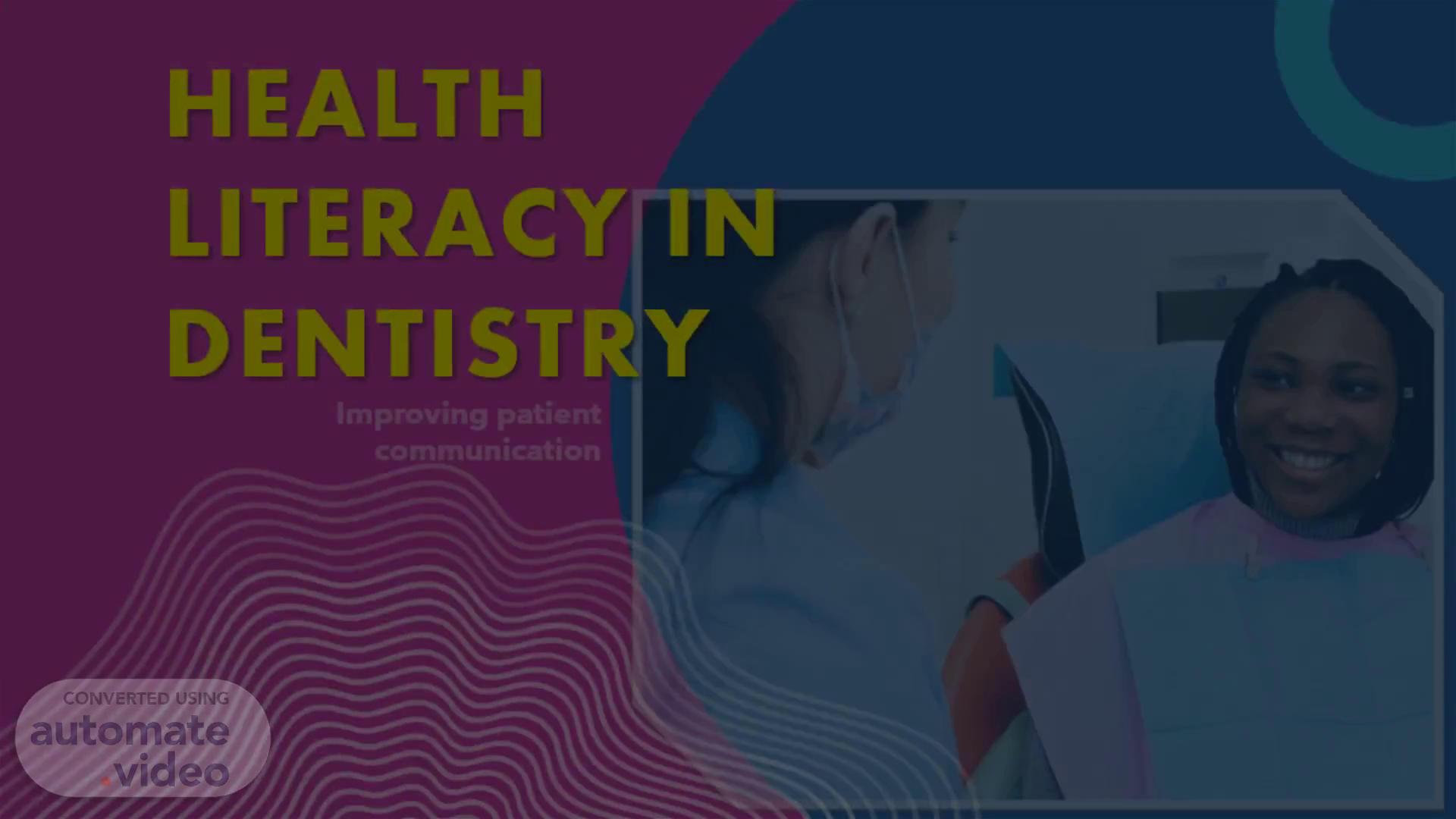
Page 1 (0s)
[Audio] Health Literacy in Dentistry: Improving patient communication.
Page 2 (13s)
[Audio] what does health literacy mean? The American Dental Association defines oral health literacy as the degree to which individuals have the capacity to obtain, process and understand basic health information and services needed to make appropriate oral health decisions..
Page 3 (37s)
[Audio] Nearly 9 out of 10 adults struggle to understand and use personal and public health information when it's filled with unfamiliar or complex terms. Limited health literacy costs the healthcare system money and results in higher than necessary morbidity and mortality. Improving health literacy could prevent nearly 1 million hospital visits and save over $ 25 billion a year..
Page 4 (1m 2s)
[Audio] Many adults have difficulty comprehending the information given to them at the dental office -even those that are highly educated. The result can be: poor compliance with oral hygiene instructions and treatment adherence, errors in taking medications, missed appointments, and frequent calls to the office staff..
Page 5 (1m 27s)
[Audio] Improving health literacy means that patients are better stewards of their own health, and thus have better outcomes. An important component of health literacy is the provider's ability to communicate clearly and effectively. Choosing to use jargon is an act of exclusion. Using clear communication advances health equity. Clear communication means presenting familiar concepts, words, numbers, and images in ways that make sense to the people who need the information..
Page 6 (2m 0s)
[Audio] Strategies to improve health literacy in the dental field 1. Assess the health literacy of the office: Ask about preferred language, explain the visit in plain language Are the health history forms easy to understand? Is the signage in plain language? 2. Educate the team on Heath Literacy implement health literacy offices communication standards. 3. Communication with patients : Start with empathy Use the "Teach-back" technique Give simple, clear instructions and ask the patient to explain or demonstrate back If they have difficulty- try again in a different way, use examples Use of Visual Aids-models and diagrams can be very helpful for children and adults 4. Implement " Motivational Interviewing" in a " Judgment-Free Zone" by Asking the patient about any barriers they face to changing behaviors Asking what they think they can change, then work with them to make a plan Document counseling, and follow-up next visit In conclusion: Clear communication builds trust with your patients. When your patients trusts you, they're more likely to follow your recommendations..
Page 7 (3m 33s)
SOURCES. HEALTH LITARACY IN DENTISTRY. 7. abstract.